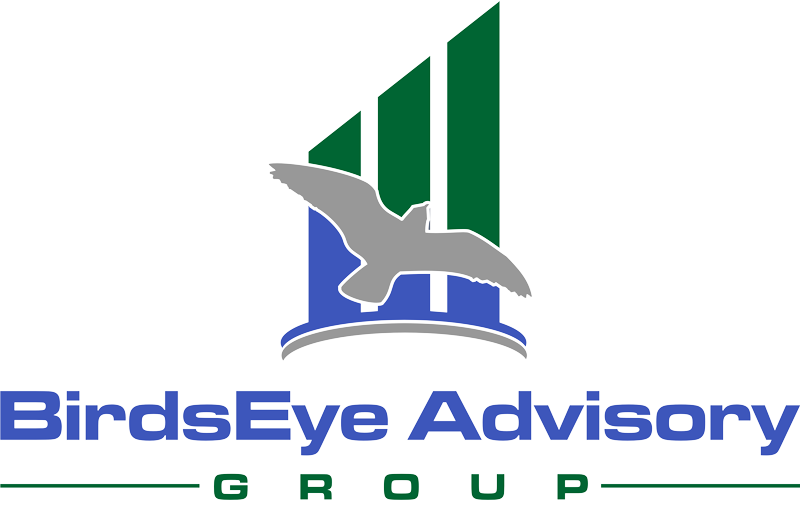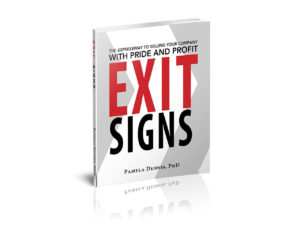An Interview with Dr. Pamela Dennis, author of “Exit Signs”
I ended my last column with these three burning questions: If you are a Boomer who owns a pet company, what can you do to increase your chance of selling your business for optimum value? Should you get a jump on the plethora of Boomer businesses that are likely to hit the market in the next 10 years? And where would you even begin to start the process? To answer these important questions and more, I connected with Dr. Pamela Dennis, the author of the new book Exit Signs: The Expressway to Selling Your Business with Pride and Profit.
This topic is timely and important as a significant number of pet company owners are approaching retirement age. As Dr. Dennis (www.pameladennisphd.com) writes in her book, many of them do not have a clear exit strategy, yet an entrepreneur’s business is likely their most valuable asset.
Carol: Why did you write this book?
Dr. Dennis: I spent the majority of my career building, growing and running a professional services firm. I loved it! Then I left it. I sold it after almost 20 years, with a great deal of pride that it had surpassed our wildest dreams for growth and working with the best companies in the US and globally. And it was going to go on without me, a big goal when I started the firm. The sale ensured my retirement was going to be well funded too. We followed an exit plan.
I kept hearing painful stories about people (some were my friends) struggling with how to prepare themselves and their business to be sold. AND to do it in a way that met their personal goals but also left their business in good hands. One owner close to tears said, “I was very successful selling my business – just to the wrong buyer.” Then I learned the dismal statistics about ownership transfers and the lack of planning.
I wanted to write a book for owners who had invested much of their lives in building their businesses and had three goals: a profitable sale that would assure their retirement life style; pride in leaving a strong business for their people and customers; and a path forward. I wrote the book in 3 sections to do this: 1) build a strategy, 2) assure sustainability and 3) achieve serenity.
Carol: Why is the topic of exit strategy so important?
Dr. Dennis: Owners of small and mid-size privately held businesses are in the race of their lives. They just don’t admit it. The consequences of this denial are a disaster in the making for owners and for the local economies where they reside. The asset value of small to medium sized businesses today is estimated at over $10 trillion. Among that group of asset owners are 12 million Boomer business owners who are hoping to transfer ownership in the next five to ten years at a rate 9 times over previous levels. The negative impact on the market value of companies will be devastating.
About half of the U.S. job base in these companies will face a transition. According to PWc in 2010, 66% of small business owners are counting on the sale of their business to fund retirement or encore careers, but we know that only 25-30% of owners are successful in selling and almost 20 percent simply close their doors. This not only impacts individuals but communities and the national economy. Individual retirements, millions of jobs, and the viability of main street businesses will be significantly impacted. A NYT article quoting a study by a former FED member estimated the US could see a loss in asset values of $4.8 trillion dollars in the next decade. Research says lack of planning is the major reason for the dismal transfer outcomes. While 96 percent of these business owners know the importance of having an exit plan, fewer than 15 percent have one.
Carol: Why don’t owners have exit plans? What can owners do if they don’t have one?
Dr. Dennis: The three main reason business owners give for not engaging in exit planning is, “I’m too busy,” “It’s too early,” and “I don’t want to think about it.”
Exit Signs uses the metaphor of being in your car on an important journey. The reality today is it’s not just a journey, it’s a race. A famous race quote is, “You gotta work on the nut behind the wheel before you starting fixing bolts in the car.” Owners have first to face reality: this is the race of your life. It will take preparation and planning. The preparation begins with the owner — defining goals, overcoming resistance or fear, pulling together the expert advisors to be their pit crew.
I advocate 3 important actions.
1. Be Honest with yourself: “Are you, personally, committed to selling?” If not, don’t deceive yourself and waste valuable resources. Letting go is a process that starts now.
2. Face Reality — Check out your “vehicle” or business for its salability and areas for improving it. With so many companies coming on the market in the next 10 years, you must be in the top 10% of your industry.
3. Start drafting that new name badge. Too many owners don’t know how to answer the question, “Who am I if not my company?” They know too well what they are leaving behind, but not what to look forward to. Enzo Ferrari said, “What’s behind you doesn’t matter.” You don’t win the race looking in the rear view mirror. However, the past does provide important lessons for what will be gratifying in the next phase of your life.
Carol: What are some of the traps owners fall into when selling their businesses?
Dr. Dennis: I call them road hazards and potholes in the book. Some of them are what’s in our heads, others are what’s in our business operations.
One road hazard I call “Too Busy to Leave, Too Tired to Stay.” It’s being so busy running your business you don’t have the time to think about how to leave it. These owners are so busy performing all those functions, some of which they may even detest, that it’s an effort just moving down the road directly in front of you.
One alternate route is to think of wearing bifocals as you build your yearly plans or prepare your growth strategy. What do you need to do today AND how does the long range exit plan impact what you focus on up-close? When you invest, for example, in customer acquisition or process improvements, how will they build the value of your business in the eyes of a buyer? When you strip the profits out of the tax return today, how will it impact the salability and value of the business in three years?
Another example of a pothole is what the Nat’l Fed of Independent Businesses (NFIB) has called one of the top 3 problems small businesses face in selling their business: lack of complete and credible performance data — financial, legal, customer and operations. Exit Signs provides planning worksheets that build a strategy to avoid the pothole or overcome it.
Carol: Does your advice benefit entrepreneurs early in their businesses as well as for those “Late Stage business owners”?
Dr. Dennis: Yes. For the entrepreneur starting a business the critical question is “why are you in business, for what end game?” Is this a lucrative career move to generate revenue and invest your profits elsewhere? At some point you liquidate? Or, is this an entity to build equity and eventually realize a return on your investment? Two great strategies, but you need to be clear up front. It will impact everything from investment and budget strategies to key talent you employ.
AND, the book addresses many of the tasks and issues “mature business owners” face — who founded and worked tirelessly to build an enduring entity. The 22.7 million small to medium-sized enterprise owners who will eventually step away from their businesses need a roadmap that recognizes their long history of vision, passion, and dedication to making their business successful, and the natural exhaustion that accompanies years of growing and running a business. They want to see their brainchild (“my baby”), often their life’s work, sustained when their tenure at the helm is over. It is for these business owners that this book is written. Of course they want to exit profitably too. They want a new kind of roadmap for their exit journey that recognizes their aspirations and values of built to last versus built to flip.
Carol: Thank you so much for sharing your wisdom and experience with APPA’s members and best of luck with your new book.
Carol Frank of Boulder, CO, is the founder of four companies in the pet industry and a Managing Director with BirdsEye Advisory Group, where she advises pet companies in M&A transactions and Exit Planning. She is a former CPA, has an MBA, is a Certified Mergers and Acquisitions Advisory (CM&AA) and holds Series 79 and 63 licenses. She highly values and incentivizes referrals and can be reached at cfrank@birdseyeadvisory.com.

